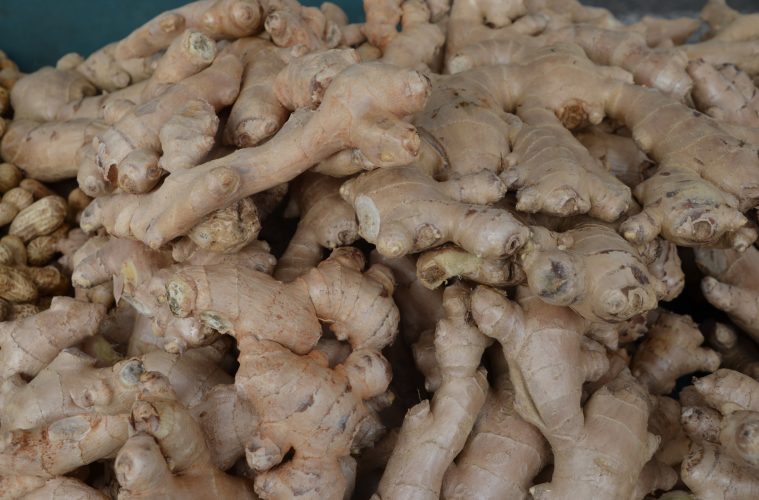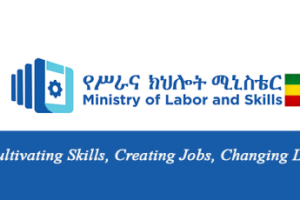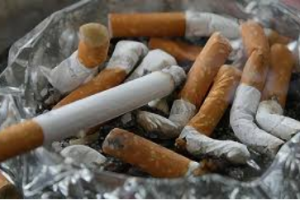
BY GETACHEW MINAS
Ginger was introduced to Ethiopia by the Arabs who brought it from India to East Africa. It is limited to the wetter regions of the country, where commercial production is practiced by farmers. Despite its uses and contribution to the livelihoods of smallholders and to the economy of the country, there has been limited attempt to promote its production and marketing. There has not been any improvement in its pre-and-post harvest handling. Studies have identified ginger value-chain problems and potential in the country. They have also recognized areas that may specialize in ginger. However, production and marketing of ginger in these areas is constrained by low quality varieties, poor handling practices, low product market prices and limited access to markets.
Efforts have been made to generate improved technologies, but these have not improved agricultural practices in ginger. However, there was little concerted effort to improve product quality through improved management practices including processing of final products. Moreover, little effort has been made to assess farmers’ practices that could be used as a benchmark for improvement, targeting product quality and sustainable supply. Studies have been made to determine performance of ginger marketing and benefits to farmers. However, its production process has not been adequately understood by policy makers and agricultural extension agents.
Studies have been carried out in major ginger producing areas of the country with the objectives of identifying production and marketing practices. It was found out that farmers practice their traditional ways in selecting varieties to be planted. However, they are faced with the problems of poor product qualities, variations in product prices, lack of improved processing and storage facilities. Some of the arable land has been allotted to ginger production in the past indicating that the crop has been most extensively produced in the southern region of Ethiopia. According to farmers of this region, there has been an extensive production of ginger of lesser quality in the past.
The same region has experienced a sudden fall of price due to high production of ginger. Respecting the law of economics, high supply of the produce and low market demand for it has led to depressed price. Consequently, farmers could not get benefit from ginger production in the past. This has led to a total reduction in ginger production and the size of land allotted to it by farmers. Currently, almost all resource poor farmers are shifting to the production of high yielding newly released maize, abandoning ginger production. Farmers argue that growing ginger commercially is full of uncertainty if there is no market guarantee based on a certain agreement. Once it lacks market demand, the only alternative would be dumping it, because no part of it goes to household consumption, unlike food crops.
Normally, in pre-harvest practice, land is prepared for growing ginger by the farmers of the southern region. They start plowing the land allotted for production at the end of the rainy season, from late September to early October. The same unit of land is plowed repeatedly and weeds are exposed to the sun until they dry out. Dry-planting of ginger takes place for three months after land preparation. The land that has been pulverized to a fine level is in moist condition which is suitable for ginger with high fiber content. It is highly pungent with large number of prominent roots that conserve moisture for a number of months.
Depending on soil type and moisture content, and the capacity of the farmer to use oxen power, the frequency of tillage increases. Plowing the land just at the end of the rainy season allows dry season planting of ginger. It enables early planting of the crop to take advantage of using the total amount of the rainfall distributed in the growing season and the crop will complete its normal growth cycle, which in turn makes it more productive. Conversely, late planting, as a result of the late onset of the rain, results in significant yield reduction as indicated by farmers. Studies indicate that if weather conditions are suitable, the tillage frequency increases thereby enhancing productivity.
The type of ginger variety determined the frequency of tillage. Farmers have experiences in identifying ginger varieties in southern Ethiopia. There are local and newly introduced varieties with distinct characteristics. In the south, farmers classify the local variety as “masculine and feminine.” In other areas, farmers identify local variety with local name, though it has resemblance with the masculine one. These local varieties have been under production since time immemorial. However, the varieties categorized have been introduced and disseminated informally. Most farmers are substituting the local variety with the new ones.
Each type of ginger production in the southern region tends to produce “distinctive” characteristics of varieties. The different features of the major ginger types currently cultivated in the south are pointed out by the farmers. They also identify quite a lot of variations among the different varieties for harvesting. These varieties have different commercial values depending on how they are propagated. Ginger is propagated by planting pieces or portions which have at least one good bud. In this respect, farmers have developed their own traditional methods of ginger planting. Studies show that this involves two methods and these are underground storage method and indoor storage method.
The first method is not a common practice but the latter is the popular seed planting method that most farmers are practicing in southern Ethiopia. With the first method, ginger pieces of the previous crop are kept in the ground without being harvested until the time of planting. During planting, the crop is harvested and cut into pieces of the required sizes and are immediately replanted. In this case, it takes a few months for the emergence of the new plants. The second method of propagation involves the following steps. First, tubers of the previous crop are harvested in November. Secondly, tubers are cut into pieces of the required sizes and are placed in plastic bags, and finally, bags containing the sets of ginger are stored in residential houses.
After a month of cutting the tubers into pieces, the cut pieces tend to sprout in the bags where they are stored. Once sprouting is initiated, dry or wet planting will take place. Farmers indicate that the rate of germination of tubers using indoor seed storage method is very fast. Then farmers plant larger pieces of ginger tubers. The reason is that larger pieces will be re-harvested together with the newly developed tubers and are economically valuable when they are sold in “mixture” with the new harvest. However, no evidence has been reported on the quality of tuber to be used as input for preparing any sort of final products such as ginger powder and oil.
A study by G. Hailemichael and K. Tesfaye indicated that seed tuber size significantly affected yield. Similarly, the size of the cut pieces of tuber may have effect on the seed rate and yield of ginger. Spacing, depth and time of planting may have effects on output. Ginger growing farmers of the region also use approximately similar seed rate with that of research recommendation. Because of its biennial nature, ginger needs to be planted as early as possible in the growing season to exploit the limited moisture in its growing areas. It is customary to plant ginger in the dry months on plots of land which have been prepared during wet season with the objective of conserving water for dry planting. To make use of the conserved water, deep planting is essential.
Certain planting practices, including planting depth, time and moisture, are recommended to be used for ginger plantation in Ethiopia.
Planting depth is one of the most limiting factors that affect productivity. Also time, moisture, and tillage practice may affect productivity. These factors have to be explored in order to exploit the genetic potential of the ginger varieties. Fertilizer types, including manure, that enhance ginger production have to be studied. The rate of its application for optimum yield per unit of land has to be determined. In addition, if there is any complaint on the part of the farmers that apply fertilizer or manure has to be recorded for further analysis. For large scale production to be undertaken outside the homestead, the cost of transportation of fertilizer or manure may be high.
Some farmers who plant ginger on a large scale may use “compost” as a substitute nutrient for producing ginger. Compost may be produced from all kinds of organic materials such as crop residues, kitchen wastes, garden cuttings, and manure. Compost may supply nutrients at the right time in required quantities. Compost is especially useful for improving the soil structure and fertility. Pulp and husk have been the other sources of nutrients used by the farmers that produce ginger at commercial level. They purchase pulp and husk from the wet and dry processing plants operating in their vicinity and even from the neighboring areas and transport it to their store when they speculate high market demand for their ginger product.
Although the price of chemical fertilizer is unaffordable some farmers use it for producing ginger at commercial level. In some cases, fertilizer does not improve the soil structure. However, some farmers do not use all types of fertilizer in ginger production as they perceive that it destroys soil nutrients and output. But, most farmers apply fertilizers in line with seasons of planting. During dry planting, farmers do not apply chemical fertilizers all the time. When they apply it, they use the technique of broadcasting. Studies show that farmers do not use chemical fertilizers in “small scale” cultivation, and where prices are fluctuating. However, for large scale cultivation, it has been a common practice in ginger production to use a “combination” of organic and chemical fertilizers. The correct proportion of nutrient sources for optimum yield and quality has to be defined.
Research needs to be conducted to determine the correct type, rate and time of application of chemical fertilizers for the optimum yield/quality as well as to analyze the economic aspect of fertilizer application. Researchers may recommend the rate of chemical fertilizers for an optimum yield of ginger for a given area. They may also propose weeding and pest control mechanisms in the same area.
Farmers may follow non-chemical weed management practices that include deep plowing of the seedbed at the end of the rainy season. This is followed by planting of seeds as per the instruction of experts. The instruction should also focus on pest control to protect the quality of ginger. Both high quality and quantity of ginger production enhance export and foreign exchange earnings. The government of Ethiopia has been making effort in the promotion of ginger in domestic and external markets. This promotes productivity and income of ginger producing farmers.
The Ethiopian herald July 6/2021





